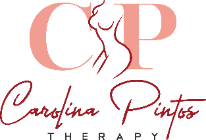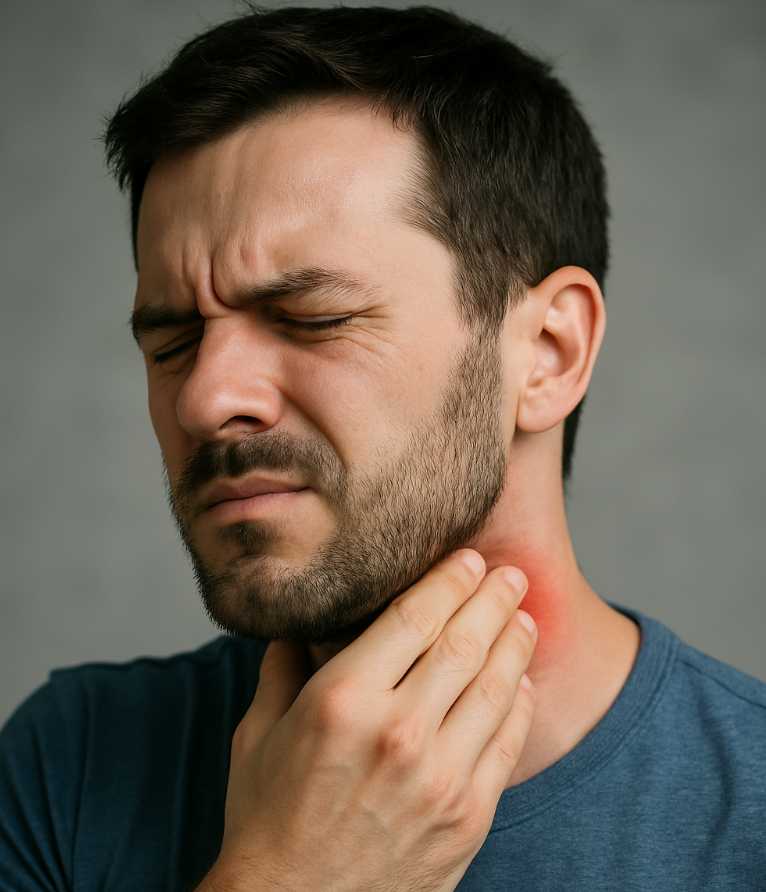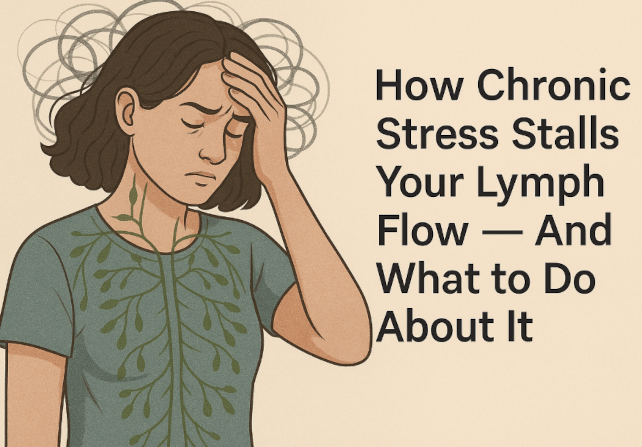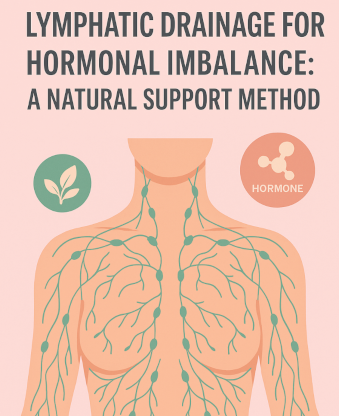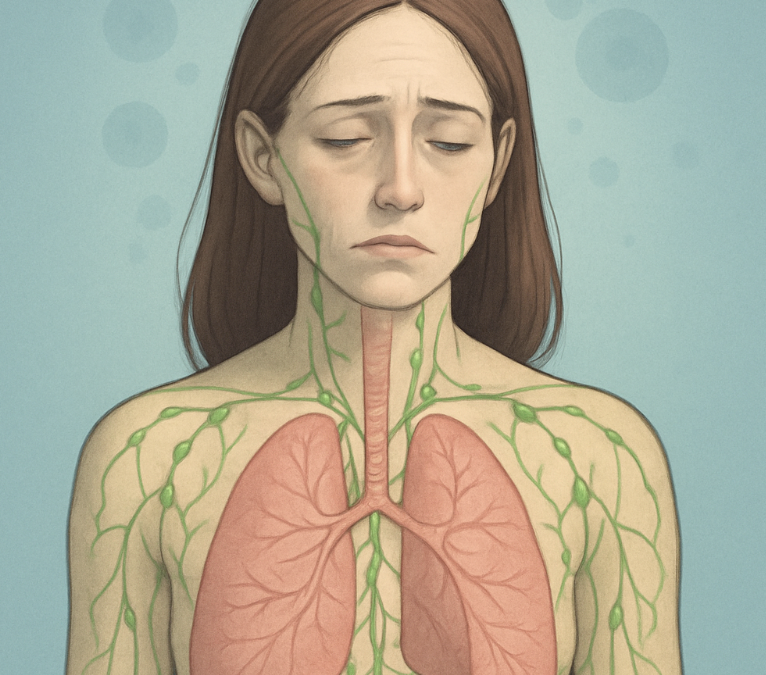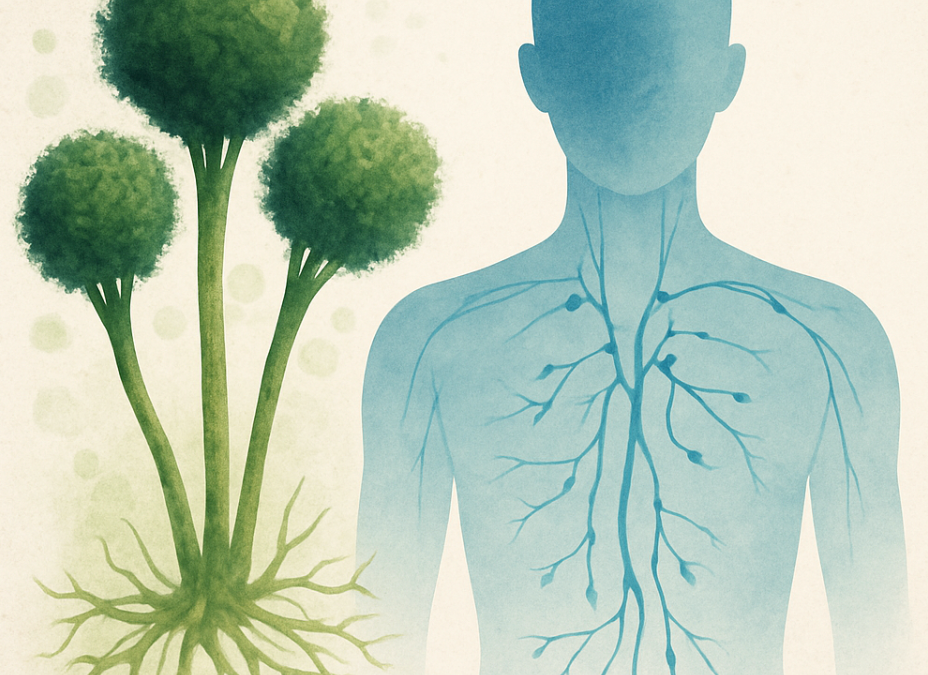Swollen lymph nodes are a common clinical finding in many medical conditions. While manual lymphatic drainage (MLD) is a valuable therapy in the management of lymphedema and post-operative recovery, its role in treating swollen lymph nodes is not universal and must be evaluated carefully on a case-by-case basis.
Recent literature has clarified important clinical guidelines regarding when lymphatic massage may be beneficial—and when it could be contraindicated or even harmful.
Understanding Lymph Node Swelling
Lymph nodes are essential components of the lymphatic and immune systems. They act as filtration points, removing pathogens, cellular debris, and toxins. When the body mounts an immune response—such as to infection, trauma, or autoimmune activity—nearby lymph nodes may become enlarged or tender. This condition, called lymphadenopathy, is typically reactive and often self-limited.
Swelling can also be due to non-infectious causes, such as:
- Lymphedema
- Cancer-related lymphatic obstruction
- Post-surgical scarring or fibrosis
Understanding the underlying cause of the lymph node swelling is critical in determining whether lymphatic massage is appropriate.
Massage During Infection: When It Should Be Avoided
In cases of active infection, lymph node swelling typically signals a high concentration of immune activity and inflammatory processes. Manipulating these areas during an acute phase can risk:
- Disrupting localized immune responses
- Mechanically spreading pathogens through lymphatic flow
- Exacerbating inflammation or discomfort
According to a comprehensive review by De Sire et al. (2025) published in Medicina, MLD should not be used during acute inflammation or active infection, especially when lymph nodes are warm, red, painful, or associated with systemic symptoms such as fever, night sweats, or fatigue. The paper emphasizes that while MLD is safe and beneficial in lymphedema, its application requires strict screening protocols during the acute or infectious phase of swelling.
“Current guidelines support lymphatic drainage only after exclusion of contraindications including infection, inflammation, and malignancy.”
— De Sire et al., Medicina, 2025
Similarly, the Lymphoedema Framework Best Practice Guidelines (Mortimer & Rockson, 2022) list infection-related lymphadenopathy as a contraindication for MLD.
When Lymphatic Drainage Can Help
Once infection is resolved and there is no evidence of acute inflammation, MLD can play a helpful role in:
- Reducing residual swelling
- Improving lymphatic flow in adjacent tissues
- Preventing fibrosis or chronic congestion
For example, in post-infectious recovery, nodes may remain slightly enlarged but non-tender. If a physician rules out ongoing pathology, lymphatic massage can be introduced cautiously to support resolution of residual fluid stagnation.
Patients with chronic lymphatic congestion, post-surgical scarring, or non-infectious inflammation (such as autoimmune conditions) may also benefit from MLD near but not directly over the node, as part of a broader treatment plan.
Clinical Implications
Manual therapists and lymphatic specialists must always:
- Conduct a thorough health history and symptom review
- Ask about fever, fatigue, or night sweats
- Evaluate the texture, tenderness, and temperature of the lymph nodes
- Obtain medical clearance when lymphadenopathy is present without a known cause
Massage should never be performed on lymph nodes that are:
- Painful or tender to the touch
- Associated with signs of systemic illness
- Rapidly enlarging or hard and fixed in place
- Suspicious for malignancy or unresolved infection
Instead, treatment should be deferred until a physician confirms that the swelling is non-acute and non-pathological.
What We Offer at Carolina Pintos Therapy
At Carolina Pintos Therapy, we apply evidence-based lymphatic and rehabilitative techniques tailored to post-surgical recovery, lymphedema, and chronic inflammation. Founder Carolina Pintos is formally trained in manual lymphatic drainage and complete decongestive therapy, with clinical protocols aligned to current standards in lymphology and rehabilitative care.
All patients undergo a professional assessment prior to treatment. Lymphatic massage is only provided when medically appropriate, including after physician clearance for clients with active or unresolved lymph node swelling. Our services also include postnatal care, scar tissue management, and esthetic lymphatic therapy, delivered with clinical precision and safety as priority.
Conclusion
So, should you massage swollen lymph nodes? The answer is: It depends.
If the lymph node swelling is due to a recent infection, acute inflammation, or unknown pathology, lymphatic massage is contraindicated and should be avoided. However, in cases where swelling is residual, non-tender, and medically cleared, manual lymphatic drainage may offer therapeutic benefit.
As with all forms of integrative therapy, safety depends on proper assessment and timing. Patients are encouraged to consult with a licensed healthcare provider before beginning any lymphatic treatment involving swollen lymph nodes.
References
- De Sire, A., Ciamarra, P., Aksoyler, D., et al. (2025). Surgical Treatment, Rehabilitative Approaches and Functioning Assessment for Patients Affected by Breast Cancer-Related Lymphedema: A Comprehensive Review. Medicina, 61(8), 1327. Link
- Mortimer, P.S., & Rockson, S.G. (2022). Lymphedema: An Underappreciated and Mismanaged Condition. JAMA, 328(14), 1380–1390.
- Fu, M. R. (2014). Breast cancer–related lymphedema: Symptoms, diagnosis, risk reduction, and management. World J Clin Oncol, 5(3), 241–247.
- International Society of Lymphology. (2020). Consensus Document of the ISL on the Diagnosis and Treatment of Peripheral Lymphedema: 2020 Update. Lymphology, 53(1), 3–19.
This writing is the original and exclusive property of Carolina Pintos and is protected under copyright law. Unauthorized use of the same without the express consent of Carolina Pintos will be subject to prosecution under applicable laws.
